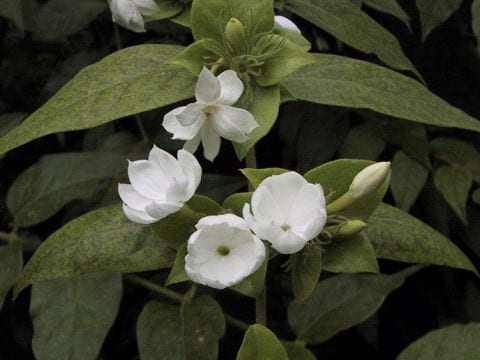On May 12th we were delighted to gather with and learn from another new Science & Justice Affiliate, Dr. Kathleen Cruz Gutierrez! Dr. Gutierrez is an Assistant Professor of History at UC Santa Cruz whose research expertise spans Philippine history, science and technology studies, Southeast Asian studies, and the history of colonial botany.
At this works-in-progress talk, Dr. Gutierrez presented work from her upcoming book, Sovereign Vernaculars: Philippine Plant Knowledge at the Dawn of New Imperial Botany, which builds on her dissertation work looking at botany under both Spanish and U.S. colonial regimes at the turn of the nineteenth and twentieth centuries in the Philippines. Dr. Gutierrez explained that she came to this project through originally working in public health with Southeast Asian immigrant communities in Los Angeles. In Filipino culture, medicinal plants hold a central role in matters of health, and as she began learning the history of Filipino botany and public health, she discovered further how plants had been positioned to reify the Philippine nation-state form, most directly following WWII when the state gained independence from the U.S in 1946.
Dr. Gutierrez described the evolution of her research from originally focusing on colonial botany to realizing she wants to center more diverse vernacular knowledges in knowing and living with plants: “Vernacular knowledge of plants enabled political, social, and intellectual possibilities, otherwise masked by Linnean (Latin) botany.” Researching vernacular knowledges has brought up many open-ended methodological and disciplinary questions for her. How does one become intimate with vernacular knowledges, especially historical knowledges swirling around the formation of a newly independent nation-state, and how can these knowledges best be articulated through modern research methodologies? Further, Dr. Gutierrez and audience members discussed what kind of disciplinary project her work is – will the finished manuscript be a work of Philippine history through a more traditional disciplinary lens of history, or will the project be articulated mainly through interdisciplinary science and technology studies (STS) frameworks? Ideally, she said, it will be both, though the challenge is to do this in a nuanced way. Attendees discussed ways to carve out room for a science studies approach to thinking about vernacular intimacies of plants and botany within a historical reading of Philippine nation-state history.
Mainly focusing the talk on one chapter of her manuscript, “A Sampaguita by No Other Name,” Dr. Gutierrez explained that the Sampaguita is a small white-flowered jasmine, which was proclaimed the national flower of the Philippines in 1934. Central to the emerging national imaginary was a gendered understanding of this plant: The Sampaguita was imagined and articulated by Manila-based elites to represent the reproductive woman, fertile for growing the nation. However, the national reliance on the Sampaguita has not been without its contradictions: It is believed to be native to the Bengal region, not to the Philippines; and its name purportedly derives from Arabic, not Tagalog. Yet, despite these, the Sampaguita became a nationalist symbol of sovereignty imagined by Manila-based intellectuals.
After showing numerous examples of the Sampaguita’s symbolism and uses across Philippine culture both geographically and temporally, Dr. Gutierrez brought up a contemporary development that seems to be increasingly a part of her project: As recently as 2020, another flower, the Waling-waling, has been championed by some in the Philippines to become a second national flower. As this presentation showed, this debate becomes about both Philippine culture and Filipina femininity: The Waling-waling, whose gendered associations are yet unclear, is not only a threat to nationalism (through its challenge to the Manila-based ruling class, with its ties to colonial power and its championing of the Sampaguita) but to idealized femininity itself in the country. Attendees agreed that the Waling-waling can serve as a nice counterpoint to the Sampaguita’s story. Thinking about these flowers both separately and together can allow Dr. Gutierrez to traverse and connect in new ways multiple threads such as trade and imperialism, value comparisons of natural resources (the Sampaguita is commonly grown on Philippine islands, while the Waling-waling is in danger of going extinct), as well as questions of linguistics and working across multiple languages both inside and outside of formal botanical archives.
We look forward to seeing Dr. Gutierrez’s book come to fruition! She also currently works on various projects, including co-leading the STS Futures Initiative and working with The Tobera Project, a community-driven public history initiative to uplift stories of Filipino families, migration, and the environment in the greater Pajaro Valley, CA.
More on Kathleen’s work can be found at: https://history.ucsc.edu/about/faculty.php?uid=kgutie20.

